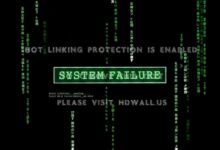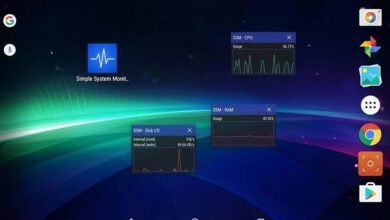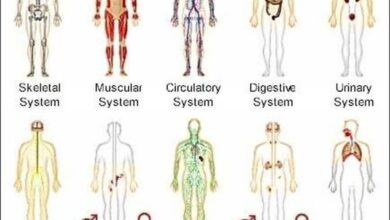System Check 101: 7 Ultimate Steps for Peak Performance
Ever felt your computer sluggish or your phone acting up? A simple system check could be the game-changer you didn’t know you needed. It’s not just tech jargon—it’s your digital health checkup.
What Is a System Check and Why It Matters

A system check is a comprehensive evaluation of your device’s hardware, software, and overall performance. Whether it’s a laptop, smartphone, or server, running a system check helps identify issues before they escalate into major problems. Think of it as a routine medical checkup—but for your tech.
Defining System Check in Modern Computing
In today’s fast-paced digital world, a system check refers to the process of scanning, diagnosing, and optimizing a computing device. This includes verifying the integrity of the operating system, checking for software updates, monitoring hardware health, and ensuring security protocols are intact. The goal? To maintain optimal performance and prevent unexpected failures.
- Verifies hardware functionality (CPU, RAM, storage)
- Scans for software conflicts and outdated drivers
- Ensures security systems like firewalls and antivirus are active
According to Microsoft’s official support page, regular system checks can reduce crash rates by up to 60% in Windows environments.
The Evolution of System Checks Over Time
System checks have evolved significantly since the early days of computing. In the 1980s, they were manual processes involving command-line diagnostics. Fast forward to today, and automated tools like Windows Defender, Apple Diagnostics, and third-party software such as CCleaner or Malwarebytes handle most of the work.
- 1980s–1990s: Manual diagnostics using DOS commands
- 2000s: Introduction of GUI-based diagnostic tools
- 2010s–Present: AI-powered automation and cloud-based monitoring
“A system check isn’t just about fixing problems—it’s about preventing them.” — TechCrunch, 2022
Types of System Checks You Should Know
Not all system checks are the same. Depending on your device and needs, different types of system checks serve unique purposes. Understanding these variations helps you choose the right approach for your situation.
Hardware System Check
This type focuses on the physical components of your device. It tests the health of your CPU, GPU, RAM, hard drive or SSD, battery, and peripherals. Tools like HWMonitor, CrystalDiskInfo, and Apple Diagnostics are commonly used.
- Monitors temperature and fan speeds
- Detects failing hard drives using S.M.A.R.T. data
- Identifies memory leaks or RAM corruption
For example, HWMonitor provides real-time sensor readings that help users detect overheating issues before hardware damage occurs.
Software System Check
A software system check evaluates the integrity and efficiency of your operating system and installed applications. It scans for corrupted files, missing updates, registry errors (on Windows), and conflicting programs.
- Runs built-in tools like Windows System File Checker (SFC)
- Checks for malware and unauthorized access
- Validates software licenses and activation status
Using the SFC command (sfc /scannow) in Command Prompt can repair missing or corrupted system files—an essential step in any Windows system check.
Network System Check
This variant assesses your device’s connectivity and network performance. It ensures your Wi-Fi or Ethernet connection is stable, checks for IP conflicts, and verifies DNS settings.
- Tests internet speed and latency
- Identifies network bottlenecks
- Scans for unauthorized devices on your network
Tools like PingPlotter or Wireshark allow advanced users to perform deep network system checks, while simpler options like Windows Network Troubleshooter handle basic issues.
How to Perform a System Check on Windows
Windows users have access to a wide range of built-in tools that make performing a system check straightforward—even for non-tech-savvy individuals. Here’s a step-by-step guide to conducting a thorough system check on your Windows PC.
Using Built-in Windows Tools
Microsoft has integrated several diagnostic utilities into Windows that allow users to run a full system check without downloading third-party software.
- System File Checker (SFC): Repairs corrupted system files
- DISM Tool: Fixes the Windows image itself
- Windows Memory Diagnostic: Tests RAM for errors
- Event Viewer: Logs system errors and warnings
To run SFC, open Command Prompt as Administrator and type sfc /scannow. The tool will scan and repair protected system files automatically.
Third-Party Tools for Enhanced System Check
While Windows offers robust tools, third-party software can provide deeper insights and automation.
- CCleaner: Cleans junk files and manages startup programs
- Malwarebytes: Scans for malware and adware
- AVG TuneUp: Optimizes performance and battery life
These tools often offer user-friendly interfaces and scheduled system checks, making maintenance effortless.
Automating System Checks with Task Scheduler
One of the most powerful features in Windows is the Task Scheduler, which allows you to automate routine system checks.
- Schedule weekly disk cleanup tasks
- Run antivirus scans during off-peak hours
- Automate backups and system restore points
By setting up automated tasks, you ensure consistent performance without manual intervention—ideal for busy professionals and enterprises.
System Check on macOS: A Step-by-Step Guide
Apple users aren’t left out when it comes to system checks. macOS includes powerful diagnostic tools that help maintain the health and performance of MacBooks and iMacs.
Running Apple Diagnostics
Apple Diagnostics is the go-to tool for hardware system checks on Mac devices. It replaces the older Apple Hardware Test and works on Macs from mid-2013 and later.
- Boots when you press
Dduring startup - Scans for issues with RAM, logic board, battery, and storage
- Provides error codes and recommended actions
If your Mac won’t start up properly, running Apple Diagnostics can quickly identify whether the issue is hardware-related.
Using Disk Utility for System Integrity
Disk Utility is essential for maintaining the health of your Mac’s storage. It can verify and repair disk permissions, fix corrupted file systems, and erase drives securely.
- Launch Disk Utility from Recovery Mode
- Select your startup disk and click “First Aid”
- Allow the tool to scan and repair any issues
This process is crucial after major macOS updates or if you notice slow boot times and file access errors.
Monitoring Performance with Activity Monitor
Activity Monitor is macOS’s version of Task Manager. It lets you see which apps are consuming CPU, memory, energy, and network resources.
- Identify resource-hogging applications
- Force quit unresponsive programs
- Monitor real-time system performance
Regularly checking Activity Monitor during a system check helps prevent slowdowns caused by background processes.
Mobile Device System Check: iOS and Android
Your smartphone is just as prone to performance issues as your laptop. Performing a system check on iOS and Android devices ensures smooth operation and extends device lifespan.
iOS System Check Using Settings and Diagnostics
While iPhones don’t offer a direct “system check” menu, you can manually evaluate system health through built-in settings.
- Check battery health under Settings > Battery > Battery Health
- Review storage usage in Settings > General > iPhone Storage
- Look for software updates in Settings > General > Software Update
Apple also uses background diagnostics to report issues to AppleCare, especially if your device is under warranty.
Android System Check via Developer Options and Apps
Android offers more transparency with system diagnostics, especially when Developer Options are enabled.
- Access system stats via Settings > About Phone > Software Information
- Enable Developer Options to monitor CPU, GPU, and network usage
- Use apps like System Info for detailed hardware insights
Regularly clearing cache and managing app permissions also counts as part of a mobile system check routine.
When to Factory Reset After a System Check
If a system check reveals persistent issues—such as constant crashes, unexplained battery drain, or malware—a factory reset may be necessary.
- Back up all data before resetting
- Reset via Settings > System > Reset Options
- Restore from backup only after confirming device stability
This should be a last resort, but it often resolves deep-seated software conflicts that standard system checks can’t fix.
Server and Enterprise-Level System Checks
In enterprise environments, system checks go beyond individual devices. They involve monitoring servers, databases, networks, and cloud infrastructure to ensure business continuity.
Automated Monitoring with Nagios and Zabbix
Tools like Nagios and Zabbix provide real-time system check capabilities for large-scale IT environments.
- Monitor server uptime and response time
- Alert administrators to hardware failures
- Track resource utilization across multiple nodes
These platforms can perform thousands of system checks per minute, making them indispensable for data centers.
Cloud Infrastructure System Check with AWS and Azure
Cloud providers like Amazon Web Services (AWS) and Microsoft Azure offer built-in system check tools for virtual machines and services.
- AWS Systems Manager enables automated patching and compliance checks
- Azure Monitor tracks performance metrics and logs
- Google Cloud’s Operations Suite provides proactive issue detection
These tools ensure that cloud-based applications remain available and secure, even during traffic spikes.
Security Audits as Part of System Check
In enterprise settings, a system check must include a security audit to protect sensitive data.
- Scan for open ports and vulnerabilities
- Verify firewall rules and intrusion detection systems
- Conduct penetration testing and phishing simulations
Regular security-focused system checks help organizations comply with regulations like GDPR, HIPAA, and PCI-DSS.
Common Issues Found During a System Check
Running a system check often uncovers hidden problems that users might not notice until it’s too late. Being aware of common issues helps you take preventive action.
Corrupted System Files
One of the most frequent findings during a system check is corrupted system files, which can cause crashes, slow boot times, or app failures.
- Caused by improper shutdowns, malware, or failed updates
- Detected using SFC or DISM on Windows
- Fixed by restoring from backup or reinstalling OS components
Regular system checks minimize the risk of file corruption by catching issues early.
Hardware Failures
Hard drives, RAM, and power supplies are common points of failure. A system check can detect early signs like bad sectors or overheating.
- Use SMART tools to predict hard drive failure
- Run memory tests to catch RAM errors
- Monitor thermal throttling in CPUs and GPUs
Replacing failing hardware before it dies completely prevents data loss and downtime.
Malware and Security Vulnerabilities
Even with antivirus software, malware can slip through. A comprehensive system check includes scanning for rootkits, spyware, and unauthorized access.
- Use multiple antivirus engines for cross-verification
- Check startup programs for suspicious entries
- Review firewall logs for unusual outbound connections
According to AV-Test Institute, over 450,000 new malware samples are detected daily—making regular system checks critical.
Best Practices for Regular System Check Maintenance
To keep your devices running smoothly, a system check shouldn’t be a one-time event. Establishing a routine ensures long-term reliability and performance.
Schedule Monthly System Checks
Set a recurring calendar reminder to perform a full system check every 30 days.
- Scan for malware and update antivirus definitions
- Clean temporary files and optimize storage
- Update all software and operating systems
This habit prevents small issues from snowballing into major problems.
Use Automated Tools Whenever Possible
Leverage automation to reduce manual effort and increase consistency.
- Enable automatic updates for OS and apps
- Use tools like Task Scheduler or cron jobs for routine scans
- Deploy cloud monitoring for always-on systems
Automation ensures that no critical system check is missed, even during busy periods.
Keep Detailed Logs and Reports
Documenting each system check helps track trends and identify recurring issues.
- Save scan results and error logs
- Note any changes made during maintenance
- Compare performance over time
These records are invaluable for troubleshooting and auditing purposes.
What is the easiest way to perform a system check?
The easiest way is to use built-in tools like Windows Troubleshooter, Apple Diagnostics, or Android Device Care. These require no technical knowledge and guide you through the process step by step.
How often should I run a system check?
For personal devices, a monthly system check is ideal. For business-critical systems, weekly or even daily checks are recommended, especially if automation is in place.
Can a system check fix a slow computer?
Yes, a system check can identify and resolve issues like disk fragmentation, malware, or background apps consuming resources—common causes of slow performance.
Do I need to back up data before a system check?
While most system checks are safe, it’s always wise to back up important data before making system changes, especially if repairs or resets are involved.
Is a system check the same as a virus scan?
No. A virus scan is part of a system check, but a full system check includes hardware diagnostics, software integrity checks, and performance optimization—not just malware detection.
Regular system checks are essential for maintaining the health, speed, and security of your devices. From personal computers to enterprise servers, proactive diagnostics prevent costly failures and downtime. By understanding the different types of system checks, using the right tools, and following best practices, you can ensure peak performance across all your technology. Don’t wait for a crash—make system checks a habit.
Further Reading:









